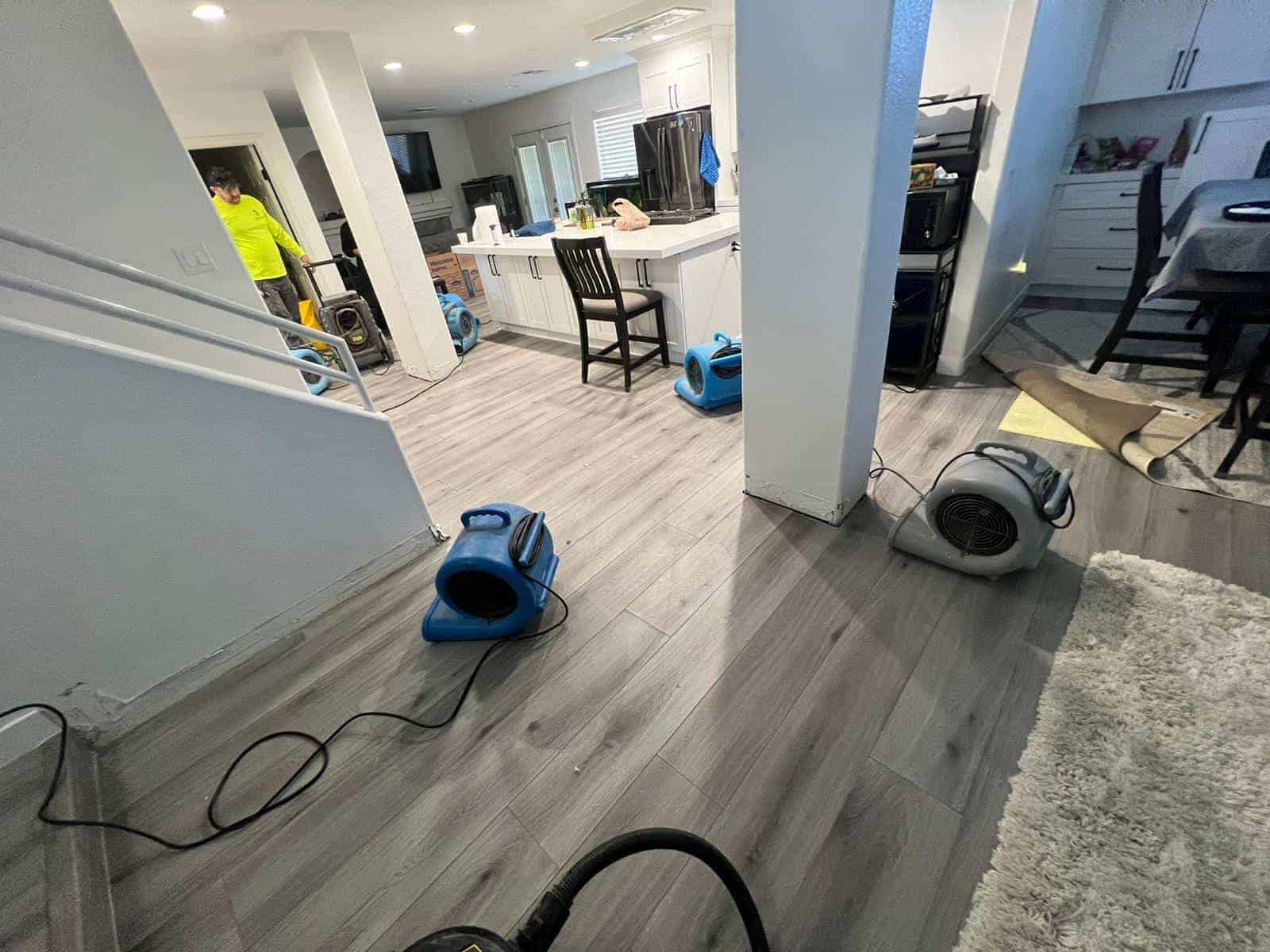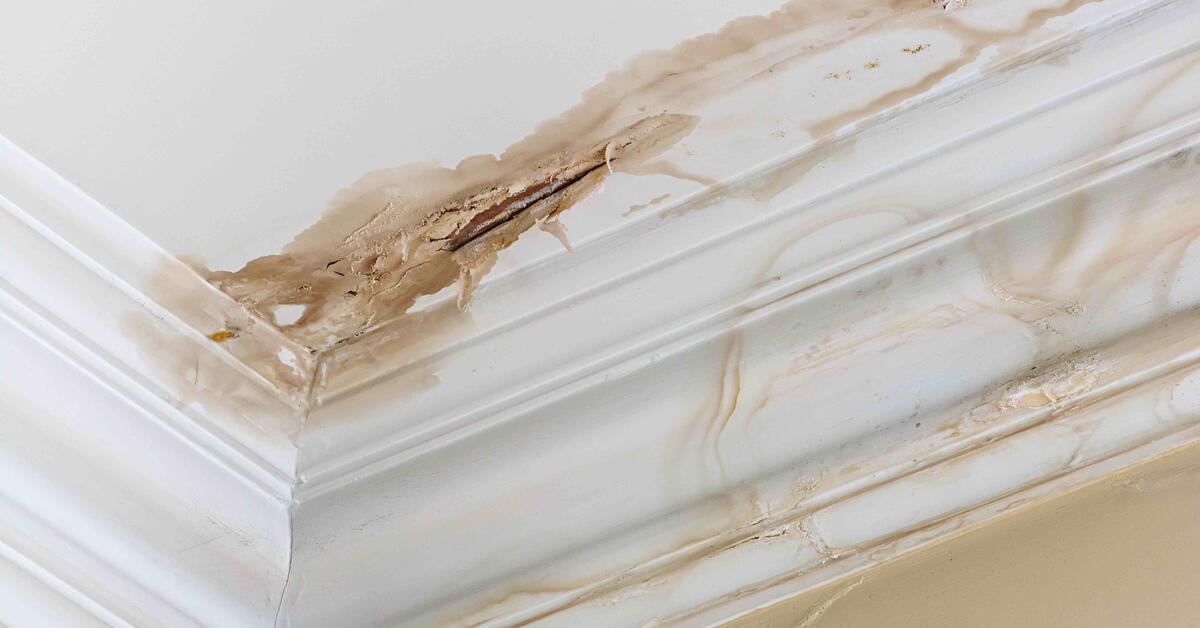Water Damage Restoration Specialists Ready to Fix Any Issue Fast
Wiki Article
The Refine of Water Damages Cleaning: Guaranteeing Your Home Is Recovered Effectively
Water damages can be an overwhelming obstacle for house owners, requiring a precise and structured clean-up process to recover security and functionality. damage restoration services. Following this, effective water removal techniques play a crucial role in alleviating additional injury.Examining the Damage
Upon finding water damage, the initial step is to completely analyze the extent of the influence. This preliminary evaluation is critical, as it assists establish the necessary steps for effective cleanup and reconstruction. Begin by inspecting the impacted locations, including wall surfaces, ceilings, floors, and individual possessions, to recognize the source of the water invasion, whether from flooding, leakages, or condensation.Recording the damages is essential for both insurance policy claims and preparing remediation initiatives - damage restoration services. Use photos and created notes to capture the severity of the damages, keeping in mind any afflicted architectural elements and products. Pay special interest to locations that might not be right away visible, such as behind wall surfaces and under carpets, as hidden wetness can bring about further problems, consisting of mold and mildew development
Additionally, evaluate the timeline of the water direct exposure. The longer the materials continue to be damp, the better the potential for damage. Understanding the duration of exposure will certainly educate the necessity of removal initiatives. Inevitably, a comprehensive assessment prepares for a successful water damages cleaning procedure, making sure that all affected areas are resolved efficiently and completely.
Water Removal Methods

Experts generally utilize submersible pumps for larger quantities of water, which can swiftly minimize flooding in basements or other affected locations. For smaller amounts, wet/dry vacuums are typically used to remove residual dampness from rugs and difficult surfaces. In addition, utilizing mobile extractors enables for targeted removal in constrained areas or locations with delicate materials.
In instances of polluted water, such as sewage or floodwater, progressed extraction strategies may entail the use of biohazard tools to make sure safety and conformity with health guidelines. High-powered extraction devices are essential in decreasing water retention in structural products, which can lead to mold and mildew growth and structural deterioration if not resolved promptly.
Ultimately, the effectiveness of water extraction techniques plays a crucial function in the general success of the water damages clean-up procedure, preparing for succeeding remediation initiatives.
Drying and Dehumidification
As soon as standing water has been successfully removed, the next essential phase in the water damage clean-up procedure is drying and dehumidification. This action is vital to avoid additional damages and mold and mildew growth, which can happen within 24 to two days in wet settings.To attain effective drying, specific devices such as industrial-grade air moving companies and dehumidifiers is used. Air moving companies flow air across damp surfaces, enhancing evaporation prices, while dehumidifiers reduce humidity levels in the air, promoting a conducive atmosphere for drying. The combination of these tools guarantees that wetness is extracted from floorings, walls, and furnishings, enabling them to dry thoroughly.
It is essential to keep an eye on the drying process closely. Specialists usually utilize dampness meters to evaluate the dampness web content in various products, ensuring that all influenced locations reach appropriate dryness levels. This meticulous approach aids to stop hidden dampness pockets that can cause structural damages or undesirable mold growth.
:max_bytes(150000):strip_icc()/GettyImages-1499353990-49a5c958582445b0a55dbceda3a9097d.jpg)
Cleansing and Sanitizing
After the drying and dehumidification phase is full, the following essential action in water damage clean-up is cleaning and disinfecting the affected areas. This procedure is vital to avoid the development of mold, microorganisms, and other pathogens that grow in damp settings.The cleaning phase usually involves removing any type of particles, dirt, and pollutants from surface areas using specialized cleansing agents. For difficult surface areas, a combination of soap and water or industrial cleansing items is usually employed. Soft products, such as furniture and carpets, may need more substantial cleansing methods, including heavy steam cleansing or deep removal techniques, to guarantee detailed sanitation.

Disinfecting complies with cleansing, making use of EPA-approved anti-bacterials to eliminate hazardous microbes. This step is important, especially in locations that might have entered into contact with floodwaters or sewer, as these resources can pose serious health dangers.
In addition, it is very important to deal with any staying odors, which may require the usage of smell neutralizers or sophisticated methods like ozone treatment. Appropriate cleaning and sanitizing not only restore the safety and health of your home yet additionally prepared for effective remediation and fixings in succeeding phases of the water damage cleanup procedure.
Repair and Fixings

As soon as the analysis is total, restoration initiatives can begin. This commonly includes fixing or replacing damaged materials, ensuring that all work adheres to regional building ordinance and criteria. For circumstances, if drywall has been jeopardized, it will certainly need to be gotten rid of and replaced with new product. In addition, flooring might require comparable focus, depending on the degree of water direct exposure.
It is critical to engage seasoned remediation specialists throughout this procedure, as they possess the experience to handle intricate repairs efficiently. In addition, they can aid mitigate potential future issues, such as mold and mildew development or architectural instability, hence ensuring a safe and habitable living atmosphere. Inevitably, reliable reconstruction and repairs recover the home's stability and improve its general value.
Conclusion
Finally, the procedure of water damages clean-up is essential for recovering a home to its pre-damage problem. Each phase, from evaluating the damage to implementing reliable water removal methods, complied with by complete drying, sanitizing, and necessary repair services, plays a crucial duty in ensuring security and compliance with building requirements. Effective implementation of these actions not only mitigates prompt damage yet likewise enhances the lasting stability and value of the residential property.Water damage can be an overwhelming difficulty for homeowners, requiring a meticulous and organized clean-up procedure to restore security and performance. Eventually, a comprehensive evaluation lays the foundation for a successful water damage cleaning procedure, making sure that all influenced areas are attended to effectively and completely.
Reliable water removal methods are vital in minimizing damages and preventing additional issues adhering to a water intrusion occasion.In conclusion, the process of water damage clean-up is essential for restoring a home to its pre-damage problem. Each stage, from assessing the damage to executing efficient water removal methods, complied with by detailed drying out, sanitizing, and necessary repair work, plays an important role in ensuring security and compliance with building standards.
Report this wiki page